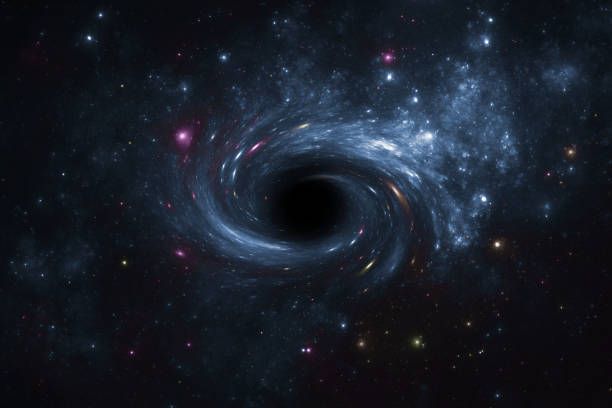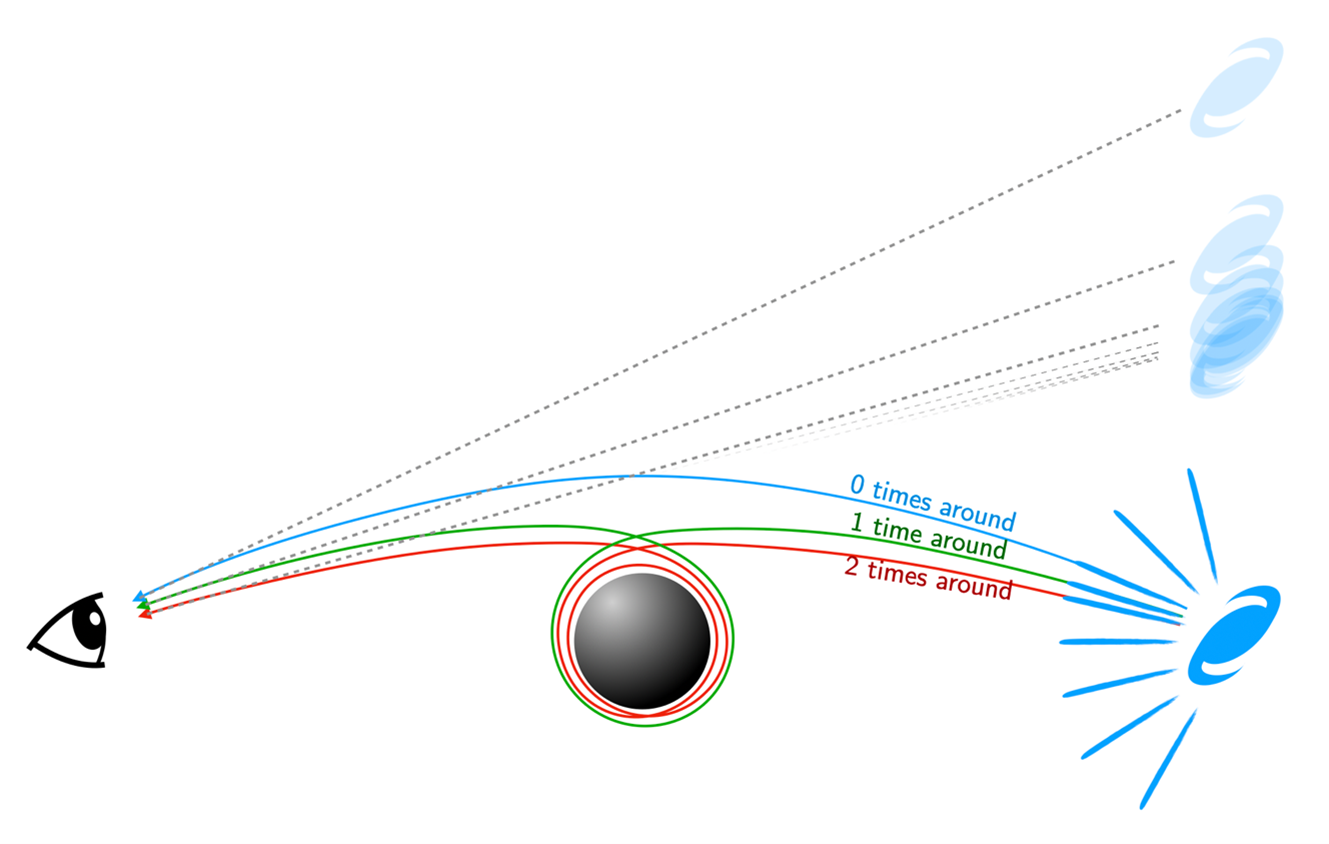
A black hole eats everything in its way—even light. But there is an orbit above the so-called "event horizon" where the light barely escapes and swirls the edges. Photons below this orbit will be sucked in. But on the way to this critical orbit, however, photons will orbit an infinite number of times.
This phenomenon of light dancing gives rise to strangeness. The closer you are looking at the hole, the more duplicates you see of the universe. In fact, an observer will see an infinite number of reflections of the universe.
The question is then how much closer you need to look to "get" to the next image. The answer is known since way back and is some 500 times, or "exponential function of two pis." The math is described with a non-linear order differential equation. But scientists have struggled with why this exact relationship exists.

"Opening a book the wrong way up"
But now the mystery seems to be solved. A science student at Niels Bohr Institute, named Albert Sneppen, has successfully proved why. We got a chance to ask how he did it. He explains that he was able to" linearize" the equation, which is a mathematical term for determining certain relationships in data, by turning it into a second-order differential equation. He comments on the method:
"This mathematical idea was born because I approached this problem from a novel perspective using ideas from a completely different branch of physics. I was lucky, that sometimes ‘opening a book the wrong way’ up allows you to appreciate the question from a very new perspective."
His calculations show how the factor changes with the speed of the rotation of the black hole.
"It turns out that when it rotates really fast, you no longer have to get closer to the black hole by a factor 500, but significantly less. In fact, each image is now only 50, or 5, or even down to just 2 times closer to the edge of the black hole", explains Albert Sneppen, in an article.
Another fascinating feature of this is that the more times the light has to go around the hole, the more the time gets delayed. Meaning that we could, for example, observe a supernova explosion again and again.




